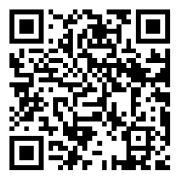
Why MRI Machines Can Become "Killers": Deadly Risks of Metal in the Scanning Room
Source:
By Wang Yuedan (Professor, School of Basic Medical Sciences, Peking University) | Originally published in Chinese media.
Abstract:
Recent fatal accidents involving MRI machines—including a 2024 New York incident where a man was fatally injured after his metal necklace was pulled into the scanner—highlight critical safety gaps. This article analyzes historical cases (2001-2018) from the U.S., India, Brazil, and others, revealing how ferromagnetic objects (oxygen tanks, wheelchairs, firearms) turn into deadly projectiles under MRI’s powerful magnetic fields. It explains the Nobel Prize-winning science behind MRI technology, its operational permanence, and why strict metal bans are non-negotiable. The author also documents near-misses in China (2009 nerve damage, 2016 wheelchair incidents) and warns about overlooked risks from implants (pacemakers, tattoos) and electronics. Essential safety protocols for patients and staff are emphasized.
Content:
Recent reports from New York describe a tragic incident where a 61-year-old man wearing a large metal necklace was pulled into an MRI machine, sustaining fatal injuries. This rekindles urgent concerns about MRI safety—a technology celebrated for diagnostic precision yet capable of lethal consequences when protocols fail.
Deadly History of MRI Accidents
2001, New York: A 6-year-old boy died after an MRI’s magnetic force pulled an oxygen tank into the scanner, crushing his skull.
2018, Mumbai: Technician Rajesh Maruti Maru was killed when an oxygen cylinder he carried was yanked into the machine.
Global incidents involve firearms, cleaning equipment, and wheelchairs becoming high-velocity projectiles.
Why MRI Magnets Are Unforgiving
MRI relies on superconducting magnets generating fields 30,000× stronger than Earth’s magnetism. These fields:
Operate 24/7 (shutting down requires costly liquid helium depletion/replenishment).
Exert uncontrollable force on ferromagnetic objects—e.g., an oxygen tank can accelerate to 40 mph toward the bore.
The Science Behind the Danger
The technology’s complexity is reflected in its 7 Nobel Prizes across physics, chemistry, and medicine, awarded for breakthroughs like:
Atomic behavior in magnetic fields (Stern, Rabi).
Nuclear Magnetic Resonance detection (Bloch, Purcell).
2D/3D imaging (Lauterbur, Mansfield).
Overlooked Threats Beyond Large Metal Objects
Implants & Embedded Metal:
Pacemakers may malfunction; aneurysm clips can dislodge.
Tattoos with metallic ink (e.g., cobalt) may cause burns.
Electronics:
Smartphones/watches risk projectile hazards and data corruption.
Small Items:
Keys/coins distort imaging; metal jewelry causes traumatic injuries.
China’s Close Calls
While no fatalities are reported, severe incidents occurred:
2009: A patient’s metal wristwatch caused permanent arm nerve damage.
2016: Wheelchairs were sucked into scanners in Shanghai and Hangzhou, trapping staff/patients.
Critical Safety Protocols
Mandatory screening: Patients/visitors must disclose ALL metal (implants, piercings, cosmetics).
Secure zones: Ferromagnetic equipment (IV poles, stretchers) banned from MRI suites.
Staff training: Enforce strict access control and emergency procedures.
Conclusion
MRI’s life-saving potential hinges on respecting its invisible power. Vigilance against metal—from necklaces to oxygen tanks—is non-negotiable. As field strengths increase globally, standardized safety practices could prevent future tragedies.
Search-Optimized Headline – Uses high-impact terms ("Killers," "Deadly Risks") while retaining accuracy.
Structured Keywords – Targets both professional (radiologists, safety officers) and public audiences.
Concise Abstract – Summarizes global cases, scientific context, and actionable insights in 120 words.
Visual-Friendly Formatting:
Bold critical terms (e.g., 30,000× stronger)
Bullet lists for incidents/threats
Clear section breaks
Authority Retention – Credits original author/institution prominently.
Wuhan Koolbio Technology Co. Ltd
Contact:Teena
Mobile:+86 15071104822
Email:info@koolbiotech.com
Add:Building 25, Langshi Mileage, Gaoxin 2nd Road, Donghu High Tech Zone, Wuhan City, Wuhan, Hubei, China